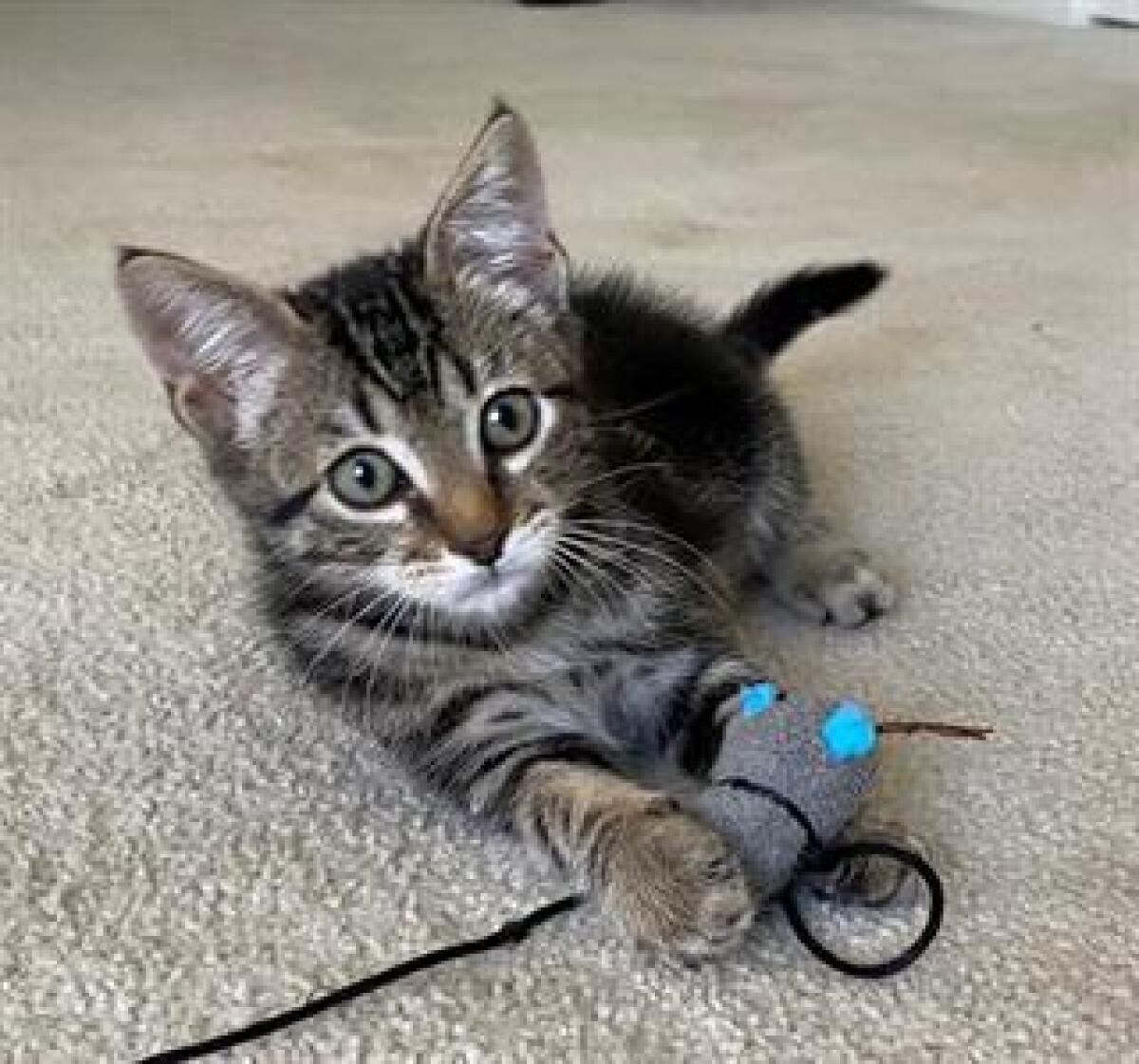Orange County Grand Jury: Status quo at county’s animal shelter is ‘unacceptable’

- Share via
Orange County Animal Care’s shelter is too understaffed to provide adequate care for the pets it houses, its adoption process limits people’s ability to connect with potential companions, and euthanasia rates for stray cats and dogs are rising, according to a report released Wednesday.
The roughly 21 animal care attendants working at the shelter handle an average of 48 critters per shift, and in some cases as many as 90, according to the report. That allows staff roughly six minutes to clean and feed each of 350 to 400 cats and dogs housed at the facility any given day, just over a third of the 15 minutes recommended by the Assn. of Shelter Veterinarians’ guidelines of care.
Meanwhile, the portion of animals that wind up euthanized instead of getting adopted is climbing. The likelihood of a shelter dog getting euthanized appears to have doubled since 2018, according to data compiled by Michael Mavrovouniotis, a former O.C. Animal Care volunteer who was let go of after speaking out about what he was observing.
“Status quo at the shelter is unacceptable,” the grand jury wrote in its report. “Appropriate remedial steps must be taken as animal welfare is paramount!”
O.C. Animal Care officials declined to comment on the report. They were reviewing the grand jury’s recommendations and must submit a formal response within 90 days, agency spokeswoman Jackie Tran said Wednesday.
The grand jury suggested O.C. Animal Care’s adoption procedure may be making it harder for families to bond with dogs at the shelter and less likely to take them home.
Cat and dog kennels used to be open to the public without prior notice, but the shelter moved to an appointment-only system to minimize contact during the height of the pandemic. Although the process has become somewhat less restrictive since then, walk-ins are limited, and kennels remain off limits to visitors.
A petition that began in July asking O.C. Animal Care to return to pre-pandemic practices had garnered over 22,000 signatures as of Wednesday.
“For many of the people I talk to, it’s, what happens when a person is at the shelter?” Mavrovouniotis said during a brief interview. “Can they go to the kennel buildings and look at a large number of the available dogs so they can connect with an animal, which may be based on the way that animal is looking back at them or the way it’s wagging its tail? Y’know, that whole impression one gets from an animal. That’s the crux of the matter.”
He went on to suggest that the current adoption procedure may be contributing to more dogs getting killed. Mavrovouniotis said the more time animals spend at a shelter without getting adopted, the more likely they become to develop problematic behaviors. The grand jury’s report indicated that behavioral issues accounted for a significant portion of the increase in euthanized canines.
“It raises the question of whether the behavioral issues are a side effect of stays that are too long and the inadequate socialization,” he said.
Cat euthanization has also been growing according to the report. The grand jury’s investigation found that the rise coincides with O.C. Animal Care’s decision in early 2020 to end a practice known as trap, neuter and return, known as TNR, in which animal control officials take stray cats to get fixed and return them to where they had been living.
That decision was made after O.C. Animal Care received a cease and desist notice stating TNR may violate laws prohibiting the abandonment of animals, according to the grand jury’s report. However, the oversight body noted that the relevant law “has never been adjudicated in a reported California court decision.”
The grand jury went on to note that O.C. Animal Care resisted the jury’s efforts to learn more about the rationale to stop TNR. So far, they have not been able “to confirm the logic, reasoning or basis,” to end preventive efforts to sterilize stray cats.
“The performance of the shelter has been getting worse because bad policies have this feedback loop effect,” Mavrovouniotis said. “They don’t just lead to one step deterioration in performance, but they lead to ongoing deterioration in performance. And that’s what we’re seeing.”
All the latest on Orange County from Orange County.
Get our free TimesOC newsletter.
You may occasionally receive promotional content from the Daily Pilot.




